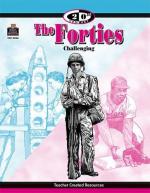|
This section contains 175 words (approx. 1 page at 300 words per page) |

|
Disorganization.
The curriculum for high schools before the 1940s was highly disorganized and variable. Student bodies of every race, cultural background, and religion defied singular, unified curricular planning. Although every state by law compelled attendance in high school through the age of sixteen, depending upon the state in which one lived, education could be rigorously academic, insufficiently academic, or fundamentally vocational. In 1941 high schools nationally offered no fewer than 274 subjects, although only 59 of these were traditional academic courses. During the New Deal, moreover, educators and New Deal administrators debated whether New Deal programs or high schools should be responsible for the nation's youth. Professional administrators were furthermore divided among those who favored a college-preparatory curriculum in high schools and those who favored vocational training. Finally, a mania for progressive education had many curriculum proponents arguing that their ideas were "progressive" — whether it had anything...
|
This section contains 175 words (approx. 1 page at 300 words per page) |

|




